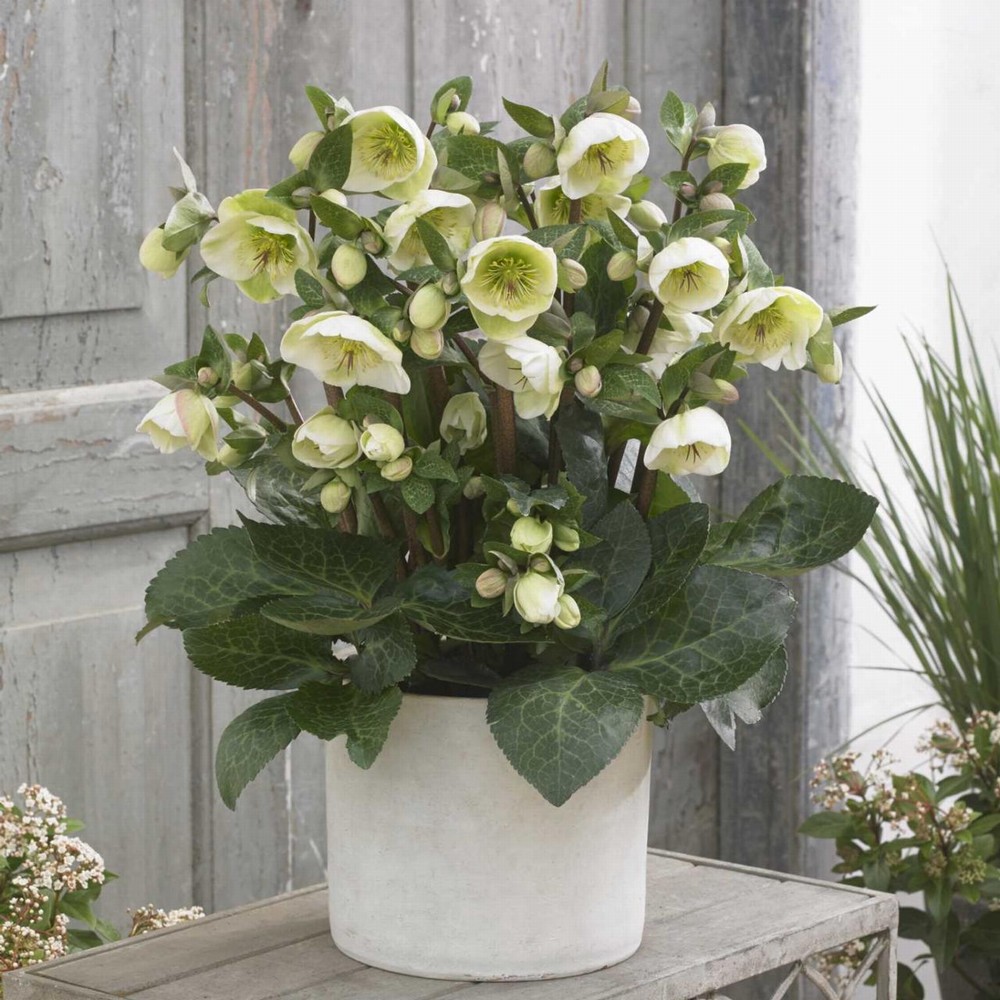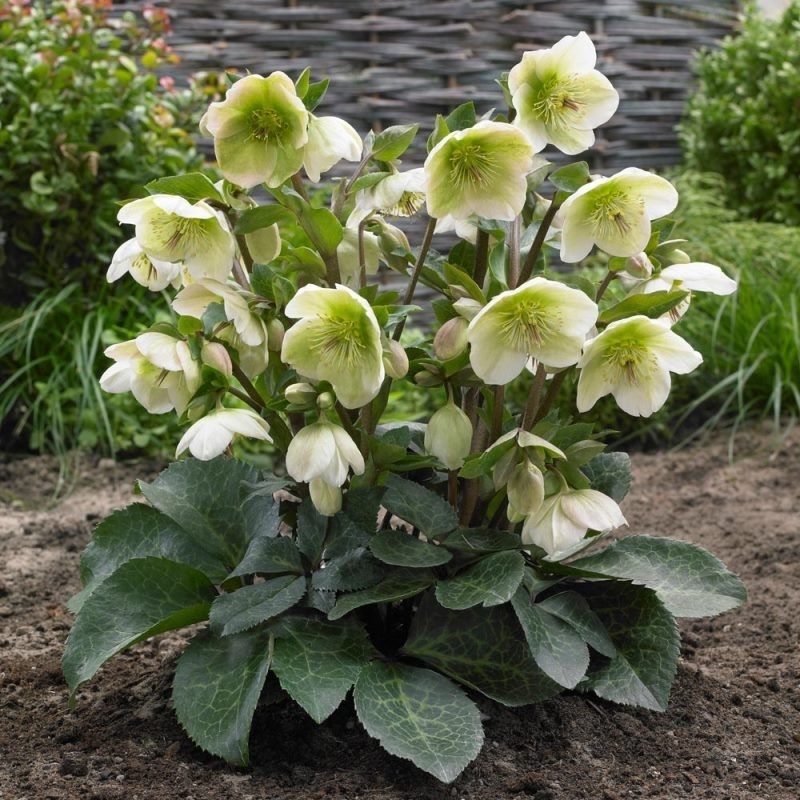Helleborus Frostkiss Moondance
£27.45
Out of stock
Description
Helleborus Frostkiss ‘Moondance’ Like Molly’s White,
- Flowers from January to April
- Great in woodland gardens pots & containers
- Remove faded, damaged or dead foliage when the flowers appear
- Cut back spent flower stems
- Hardy & perennial for many years
- Best in partial shade in a fertile moist but well-drained soil
- Height 60cm – Spread 60cm
Lenten Rose, Hellebore
Care
Christmas Roses, Snow Roses and Lenten Roses all happily grow and thrive well without requiring a great deal of maintenance if planted in the right spot. Even in planters, the charming winter flowerers don’t require a great deal of work. To avoid the occurrence of frost drought, water the Helleborus plants sufficiently during periods of mild weather.
In the summer, you want to move the planter to a shady place and water it occasionally to prevent the plant from drying out.
Flowers
Removing dead flowers from hellebores during the flowering season is normally not necessary; the slightly pink or green tones the flowers take on as they fade actually extend the flowering season in winter. Remove the seed pods before they open, as offspring plants normally don’t flower well and might suppress the original plants.
Leaves
With Lenten Roses, it is recommendable to remove all leaves before the plants start to flower in December and January (when budding stems are approximately 10 cm in height). The old and brown leaves of Christmas Roses and Snow Roses can best be removed in the spring and summer.
Feeding
Helleborus plants do not require any fertiliser in their first spring. Feed older plants from February onwards and apply a second dressing of fertiliser in midsummer, when the plants grow new roots and initiate flower buds for the next season. Organic fertilizers such as horn shavings and compost have proven to be the fertilizers of choice. If the plants suffer lime deficiency, soils can be improved by working in Dolomite lime or crushed eggshells.
The leaves that have fallen off nearby deciduous trees provide a layer of mulch in winter; simply leave them lying on the ground. They form a layer that activates soil life. Helleborus is very sensitive to root injuries. For this reason, the ground around it should not be dug.



